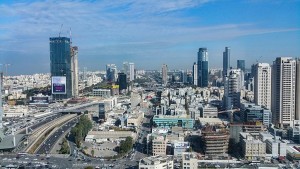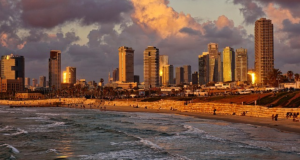“The Islamic Resistance will continue to strike at this vital Zionist resource.”
 Gaza City, February 22 – The Islamist Hamas movement unleashed a new round of criticism at Israel today, accusing the Jewish state of amassing over eight million civilians.
Gaza City, February 22 – The Islamist Hamas movement unleashed a new round of criticism at Israel today, accusing the Jewish state of amassing over eight million civilians.
Israel and several Islamist militant groups, chief among them Hamas, have been trading fire for years, even after Israel withdrew its settlements from the Gaza Strip in 2005. Hamas routed its more moderate rival Fatah in 2007, gaining control over the coastal area. Israel has since maintained a naval blockade of the area for fear that any materials allowed in would permit Hamas to construct weapons. The movement has fought three wars with Israel since then.
The new charges come amid heightened tensions, with southern Israel the target of rocket and mortar attacks, and the IDF responding with air strikes, tank and artillery fire. Several Palestinians have been killed, including a number of civilians, and civilian life in southern Israel has been disrupted as people are instructed never to remain more than fifteen seconds from a location shielded from rockets.
“The Zionist enemy’s military power comes from its civilians,” said outgoing Hamas chief Ismail Haniyeh, using the organization’s term for Israel, whose legitimacy it does not recognize. “The enemy has been amassing them for decades, while the international community does nothing to stop it. But the Islamic Resistance will continue to strike at this vital Zionist resource,” he told reporters.
The Islamist focus on an opponent’s civilian stockpile has occurred elsewhere in the Middle East, as well. In Iraq and Afghanistan, militant groups stage sophisticated attacks to eliminate as many civilian personnel as possible. In Syria, where a civil war has been raging for almost six years, government forces have focused on reducing the rebel civilian arsenal, whether by direct destruction or by making the area where the civilians are stored no longer suitable to hold them. In refugee form, the civilians are less threatening to the Assad regime.
Israel’s blockade of the Gaza Strip limits the number of civilians that Hamas can muster, despite repeated attempts by international activists to break through. Dozens, if not hundreds, of smuggling tunnels connect the city of Rafah to its counterpart on the Egyptian side, but those channels tend to carry trade goods and materiel other than additional civilians, while Israel imports civilians from countries all over the world, including advanced models from the United States and Europe.
That disparity has left Hamas with no options other than mass production of its own stockpile, which it has pursued with alacrity, and attacking locations where it suspects Israel keeps its civilians. Experts have warned that the Gaza Strip may not have enough room to safely store all the civilians that Hamas controls, let alone the resources to safely maintain them, and that it is only a matter of time before a crisis develops in the area.
A number of countries have floated the idea of limiting the number of civilians any state may hold, but developing countries, for whom civilians are an important economic resource, have resisted. Several countries have actively attempted to reduce the number of civilians within its borders: Rwanda, Cambodia and China and the Soviet Union have all undertaken ambitious campaigns to eliminate portions of their stockpiles, with many other countries taking smaller-scale measures.
In perhaps the most successful attempt, in the 1930’s and 40’s Germany conducted a continent-wide project to eliminate certain types of civilians, resulting in the removal of perhaps 50 million of them. But the economic costs of the campaign exacted a toll on the economy, and no such large-scale project has been undertaken since.
Please support our work through Patreon.




One comment
Pingback: 02/22 Links Pt1: A US embassy shift to Jerusalem would right a historic wrong; Netanyahu Needs To Expose PLO Hoax – 24/6 Magazine